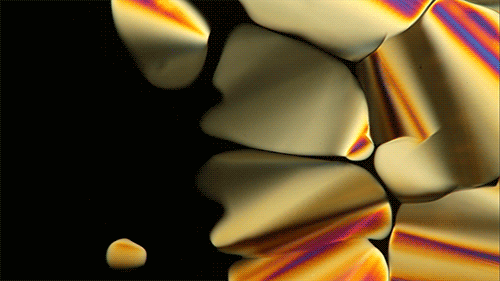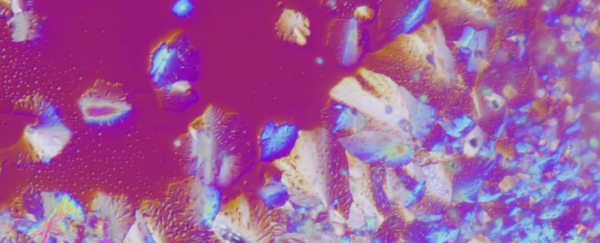
Filmed by artist and biochemist Linden Gledhill, this colourful timelapse of liquid DNA molecules crystallising is a pretty neat way of bringing attention to a new collaboration called MSSNG. The project has brought Google and US-based advocacy group Autism Speaks together to fill the gaps in our knowledge about autism - a disorder that affects 1 percent of the global population.
As part of a pilot project, the team sequenced 1,000 genomes of families affected by autism, which they say has led to new discoveries about the disorder. They're now working with the global scientific community to sequence 10,000 genomes, which they'll make available in an open source repository in an effort to identify many different subtypes of autism. This research, they say on their website, could lead to more personalised and more accurate treatments for the disorder.
Gledhill is one of the scientists working on the project, and as part of his research, he magnifies the process of DNA crystallisation up to 1,000 times in his lab. He found that when he placed a DNA sample between two glass slides for magnification, the water around the edges would evaporate, causing the sample to crystallise. What results is a slick and beautiful kaleidoscope of colours and shapes.
 Credit: James Cooper at Digg
Credit: James Cooper at Digg
"The beautiful colours are the result of using polarising light, which is then twisted by the DNA crystals, causing an interference in the light spectrums," James Cooper explains at Digg. "The patterns you see are the visual result of that interference, captured by a camera set up on an extra port on the microscope."
"It's actually very cool because few people have really seen images like these before our research groups," Gledhill told Cooper. "When people see them they ask me, 'What is that?' They have no idea and are quite surprised it's DNA."
Gledhill has so far taken over 15,000 images of DNA crystallisation, which he plans to sell as part of a fundraising initiative for the MSSNG project. He told Cooper that capturing unique and powerful images such as these are his way of showing the public what he's working on, and hopes it will get people talking about autism and ways we can better research the disease.
Head to Digg to see more awesome gifs of the process.
